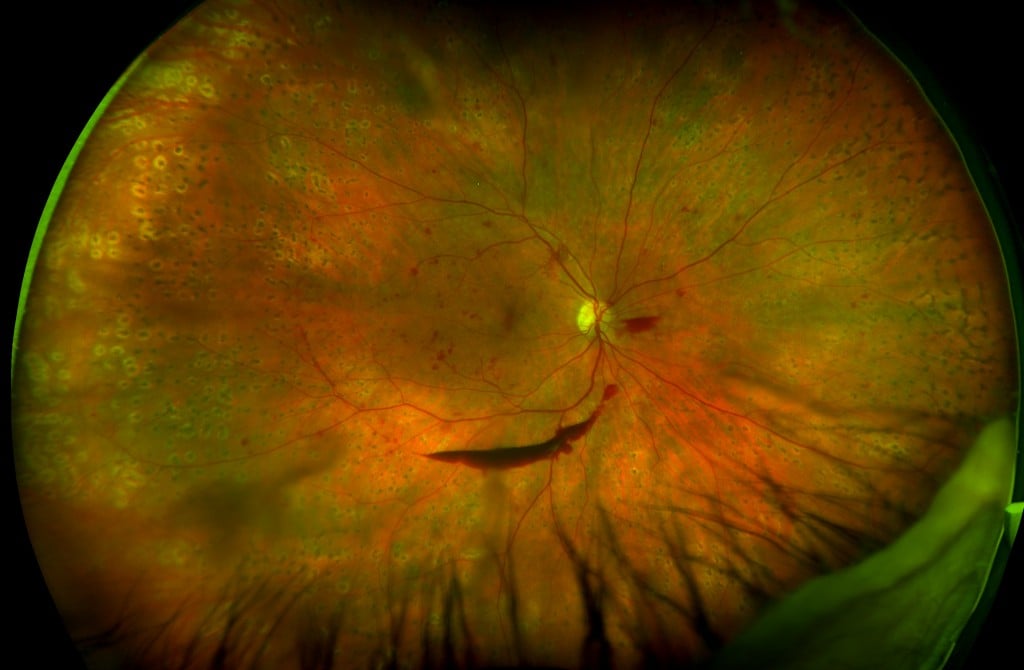Medicine’s first responsibility is to the patient, but patients often complain about the inconveniences of preventive screenings and can become noncompliant. UWF™ retinal imaging decreases the discomfort of retinal screening, reduces screening time and, as a result, may increase patient satisfaction. Clinicians also benefit, since improved imaging not only allows them to provide enhanced patient care but also invites increased collaboration with colleagues.
Patient Benefits Beyond Improved Imaging
Patients often forgo preventive screenings because, in their minds, the discomfort of pupil dilation during the exam outweighs the potential benefit of preventing disease. This dilation process also extends the visit time and leaves the patient with the side effect of short-term blurred vision. UWF is complimentary and, in some cases, can eliminate patient pupil dilation. Consequently, UWF imaging can decrease examination time, which can significantly improve patient compliance.
Enhanced imaging and diagnostic quality also provide images superior to those produced by current Early Treatment Diabetic Retinopathy Study (ETDRS) standards for DR screening (Kernt, 2012). Patients who undergo UWF imaging stand to be diagnosed sooner and treated earlier.
Clinician Benefits Beyond Direct Patient Care
Not only does UWF imaging assist in improving patient outcomes, it can be integrated with screening programs. The combination of UWF and fluorescein angiography has exhibited peripheral microaneurysms, neovascularization, vascular nonperfusion, and vascular leakage, all unseen pathologies when compared to ETDRS standard fields. Additionally, optical coherence tomography and UWF imaging are breaking ground in improving DR assessments. Integrated use, through telemedicine, opens the door for clinical research, research collaborations, and international consultations formerly limited by location and/or clinicians’ time.
Overall Healthcare Benefit
UWF imaging advances in the diagnosis and management of DR, and the prognostic significance of findings in DR and diabetic macular edema, have demonstrated its potential as a new standard. The U.S. healthcare system is changing along with the age and health of the population it serves. Incorporating UWF imaging as part of the clinical management of diabetic patients better enables clinicians to keep patients at the center of care while meeting healthcare demands. The dynamics of UWF imaging, and its ability to integrate with various screening programs, potentiates worldwide collaborative efforts toward cutting-edge healthcare advances and beneficial future practices. Exposure to colleagues and awareness of novel and/or rare clinical cases from medical institutes throughout the world promise to progress student medical training and physician continued education. Such progression promises benefits to physicians in their current practices and, more significantly, their patients.
Learn how Ultra-widefield Retinal Imaging is changing the standard of care for Diabetic Retinopathy.

